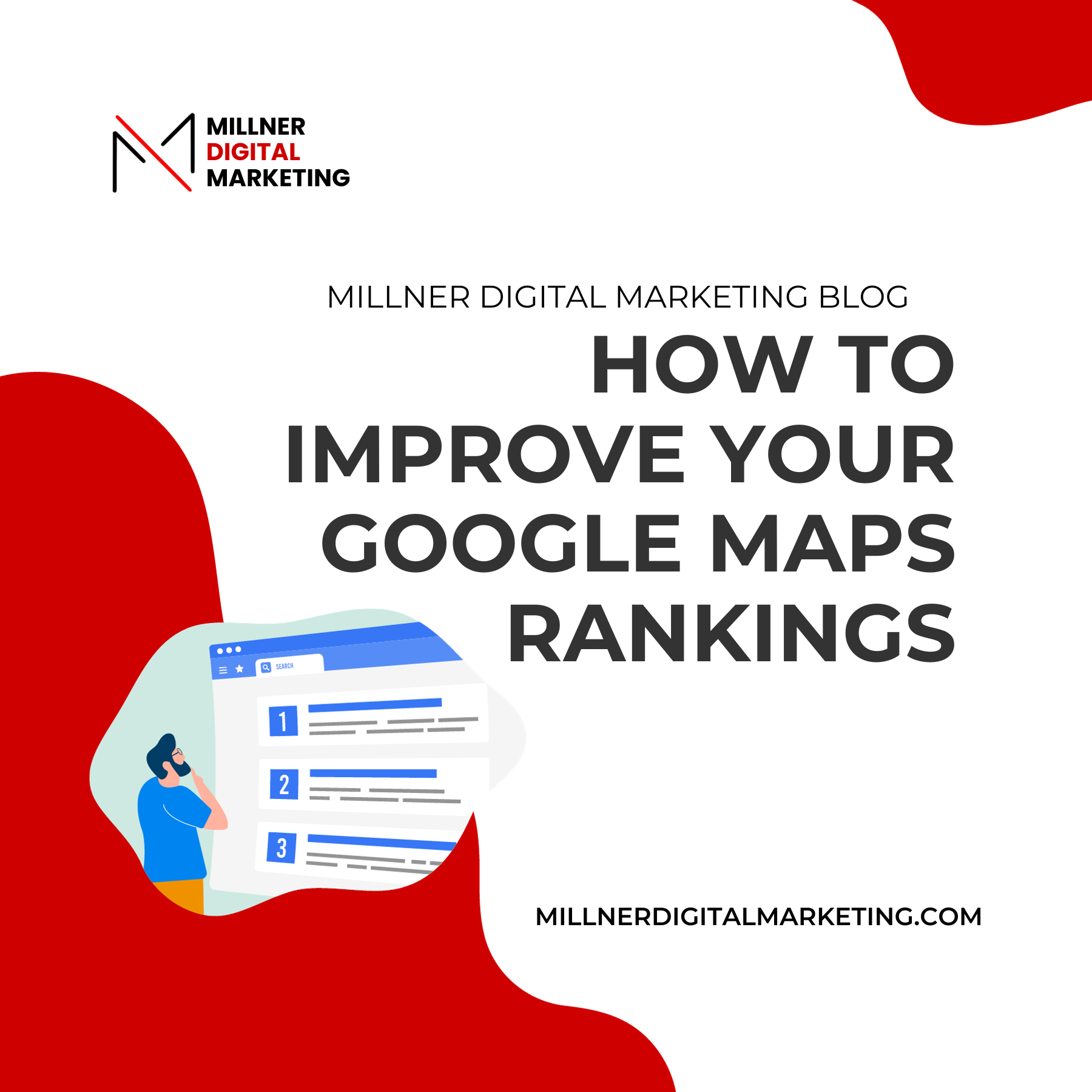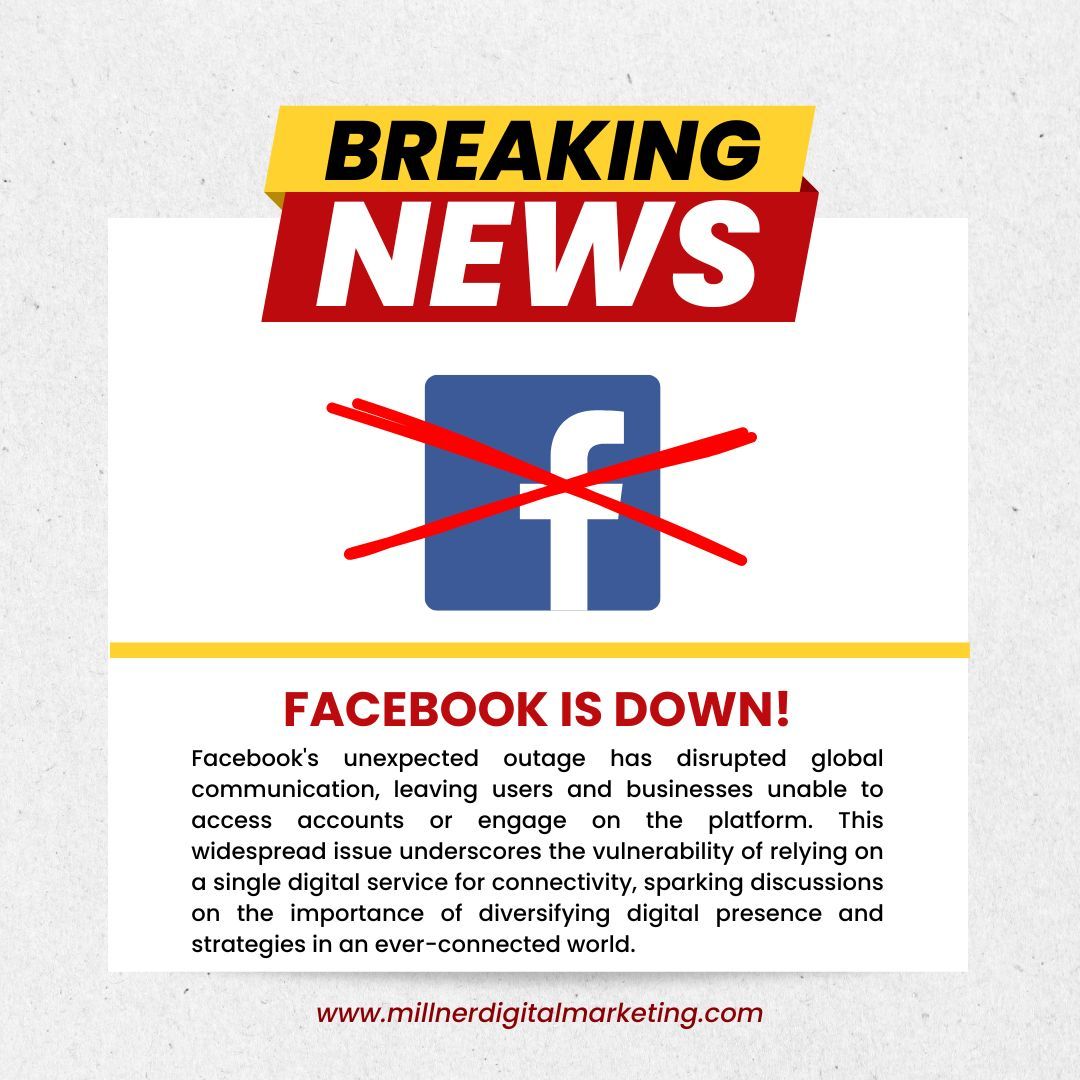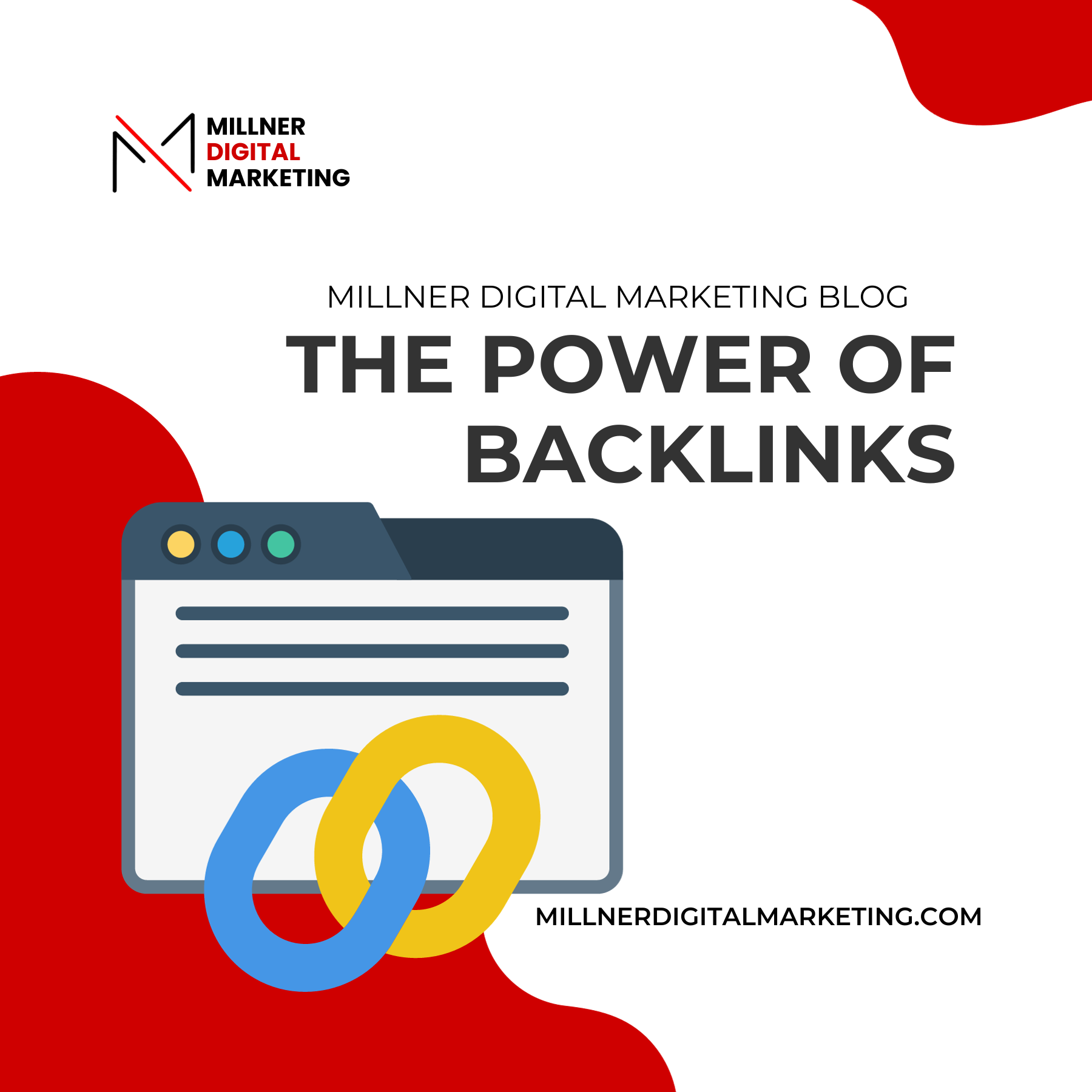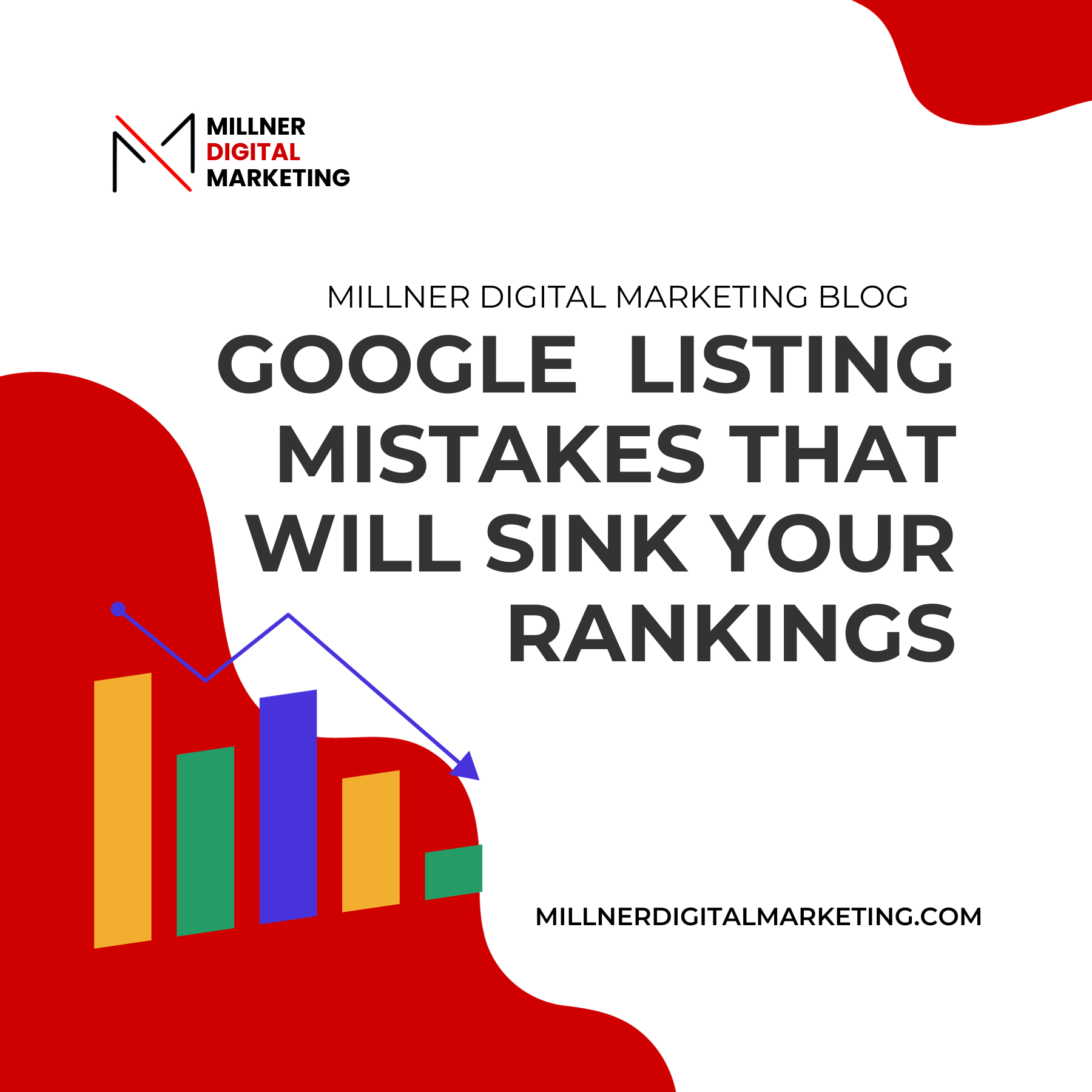Email: scottmillner@millnerdigitalmarketing.com
Phone: 706-715-5647

Avoid These 6 Web Design Mistakes when Designing your Website
Your website is not just a collection of webpages; it is the online face of your business. It serves as a crucial hub for customer interaction, engagement, and conversion. In today's digital world, having an effective website design is not just an option, but a necessity. It can either make or break your business. A well-designed website can attract and retain customers, while a poorly designed one can drive them away.
Web design may seem like a simple process, but many businesses make several critical mistakes that cost them valuable leads and conversions. These mistakes can range from choosing the wrong color scheme to having a cluttered layout or slow loading times. In this blog, we will delve into the top 6 web design mistakes that businesses commonly make. By identifying and avoiding these pitfalls, you can ensure that your website performs well and meets your goals.
So, let's dive in and explore how you can create a website that not only looks great but also delivers exceptional user experience and drives business growth.

Unclear Communication and Messaging
When it comes to your website, having a clear and concise message is of the utmost importance. It should effectively communicate what your business does, who it is for, and what makes it unique.
Unfortunately, many businesses fall into the trap of using vague language and buzzwords that only serve to confuse potential customers, ultimately leading them to leave the
To avoid this, it's important to ensure that your website's message is not only clear and concise, but also free from industry jargon. By eliminating complex terminology, you can create a more inclusive and accessible experience for your audience.
In addition to using straightforward language, consider incorporating visual cues such as headings, subheadings, and bullet points. These elements can help customers quickly and easily understand your message, allowing them to navigate your website with ease.
Remember, a well-crafted and informative website message is the key to engaging potential customers and keeping them on your site. So take the time to refine your message, ensuring that it accurately represents your business and resonates with your target audience.
Weak Calls to Action
A call-to-action (CTA) is a crucial element on your website that serves as a guiding beacon, directing customers towards taking the desired action that aligns with your website's goals. Whether it's enticing them to sign up for a captivating newsletter, facilitating a seamless purchase experience, or encouraging them to book a consultation, a well-crafted CTA can make all the difference. It provides a clear path for users, prompting them to engage with your brand and take the desired action.
However, it's unfortunate that many businesses overlook the significance of a strong CTA, either opting for weak ones or neglecting to include them altogether. This oversight can result in missed opportunities to convert visitors into customers. By ensuring that your CTA is clear, prominently visible, and in harmony with your website's objectives, you'll empower your customers with the clarity they need to confidently proceed towards their next steps. A strong CTA should be compelling, persuasive, and instill a sense of urgency, motivating users to take immediate action.
Remember, the success of your website and achieving your goals depends on the effectiveness of your CTAs. So don't underestimate the power of a well-designed and strategically placed call-to-action. Invest time and effort into crafting CTAs that resonate with your target audience and lead them seamlessly towards their desired outcomes.
Too Much Clutter
When building your website, simplicity is key. You don't need to overload it with every possible feature, element, or widget that you can think of. In fact, too much clutter can have a detrimental effect on your customers' experience. It can lead to confusion and distract them from the core message of your business.
Instead, it's important to focus on the essential aspects of your business that truly matter. Identify those key elements that align with your brand and remove any irrelevant components that merely add noise and provide no real value to your customers. By streamlining your website and ensuring that every element serves a purpose, you can create a more seamless and impactful user experience that leaves a lasting impression.
Consider the layout and design of your website. Optimize it to be visually appealing and user-friendly. Pay attention to the color scheme, typography, and overall aesthetics. Implement intuitive navigation to guide your visitors smoothly through your content. Enhance the loading speed to minimize any potential frustration.
Moreover, invest in compelling and persuasive copywriting. Craft engaging and informative content that effectively communicates your message and resonates with your target audience. Utilize high-quality visuals, such as images and videos, to enhance the overall appeal and engagement of your website.
Regularly analyze and gather feedback on your website's performance. Use analytics tools to track user behavior, identify areas for improvement, and make data-driven decisions. Continuously iterate and optimize your website to ensure it remains relevant and effective in delivering your business goals.
A well-designed and streamlined website can play a significant role in attracting and retaining customers. It can enhance your brand image, build credibility, and ultimately drive conversions. So, take the time to carefully curate your website, focusing on what truly matters, and deliver an exceptional online experience for your audience.
Untrustworthy Design Elements
When it comes to designing your website, one of the most crucial aspects is prioritizing the establishment of trust and credibility with your customers. Taking certain design elements into consideration can inadvertently diminish trust and give your website an unprofessional appearance. For instance, it is important to be mindful of using low-quality images that can undermine the overall impression you want to create. Similarly, avoiding outdated fonts, excessive use of colors, or an overwhelming number of ads on your website can make it appear cluttered and unappealing.
To ensure a positive user experience and foster long-term relationships with your audience, strive for a professional and streamlined design that instills confidence in your customers. This can include choosing high-quality images that reflect your brand identity and values, opting for modern and visually appealing fonts, and using a color scheme that is harmonious and consistent with your overall brand image. Additionally, carefully consider the placement and relevance of ads on your website, ensuring they do not overwhelm or distract your visitors from the main content.
By paying attention to these details and investing in a user-centric design approach, you can create a website that not only looks professional but also inspires trust and confidence in your customers. This will ultimately contribute to the success of your business by fostering long-term relationships and encouraging repeat visits from satisfied customers.
Non-Responsive Design
In today's mobile-first world, where the majority of customers access websites from their mobile devices, it is crucial to optimize your website for mobile friendliness. Failing to do so may result in a frustrating user experience and significantly impact your online presence. Potential customers are more likely to abandon a website that is not mobile-friendly, leading to missed opportunities for engagement and conversions.
To ensure a positive user experience, it is important to go beyond mobile responsiveness and consider all screen sizes, including desktop and tablet devices. By thoughtfully designing your website to cater to various devices, you can provide a smooth and user-friendly browsing experience for your audience, regardless of the platform they choose to engage with. This attention to detail can make a significant difference in capturing and retaining the attention of your target audience, ultimately driving better results for your business.
Poor Accessibility
In recent years, accessibility has emerged as a critical issue for businesses. It is imperative for companies to ensure that their websites are inclusive and accessible to individuals with disabilities, thereby promoting equal access to information and services. By designing websites with accessibility in mind, businesses can create an inclusive digital environment where individuals with disabilities can seamlessly navigate and access the content they need. This not only helps in complying with accessibility guidelines but also fosters a more inclusive and diverse online community.
Conclusion
Having an effective website design is crucial for the success of your business, and avoiding the common web design mistakes is a key to building an effective website. By keeping your messaging clear, using strong calls to action, minimizing clutter, building trust, ensuring mobile responsiveness, and designing for accessibility, you will be on your way to having a website that delivers results for your business. Focus on these elements, and you'll have a website that customers will love and keep coming back to!
READY TO WORK WITH
MILLNER DIGITAL MARKETING?

GET IN TOUCH
We will get back to you as soon as possible
Please try again later
MORE MARKETING TIPS & TRICKS

Navigation
Contact info
706-715-5647
scottmillner@millnerdigitalmarketing.com
295 Morning Dr, Athens, GA 30606, United States of America
| Millner Digital Marketing LLC









